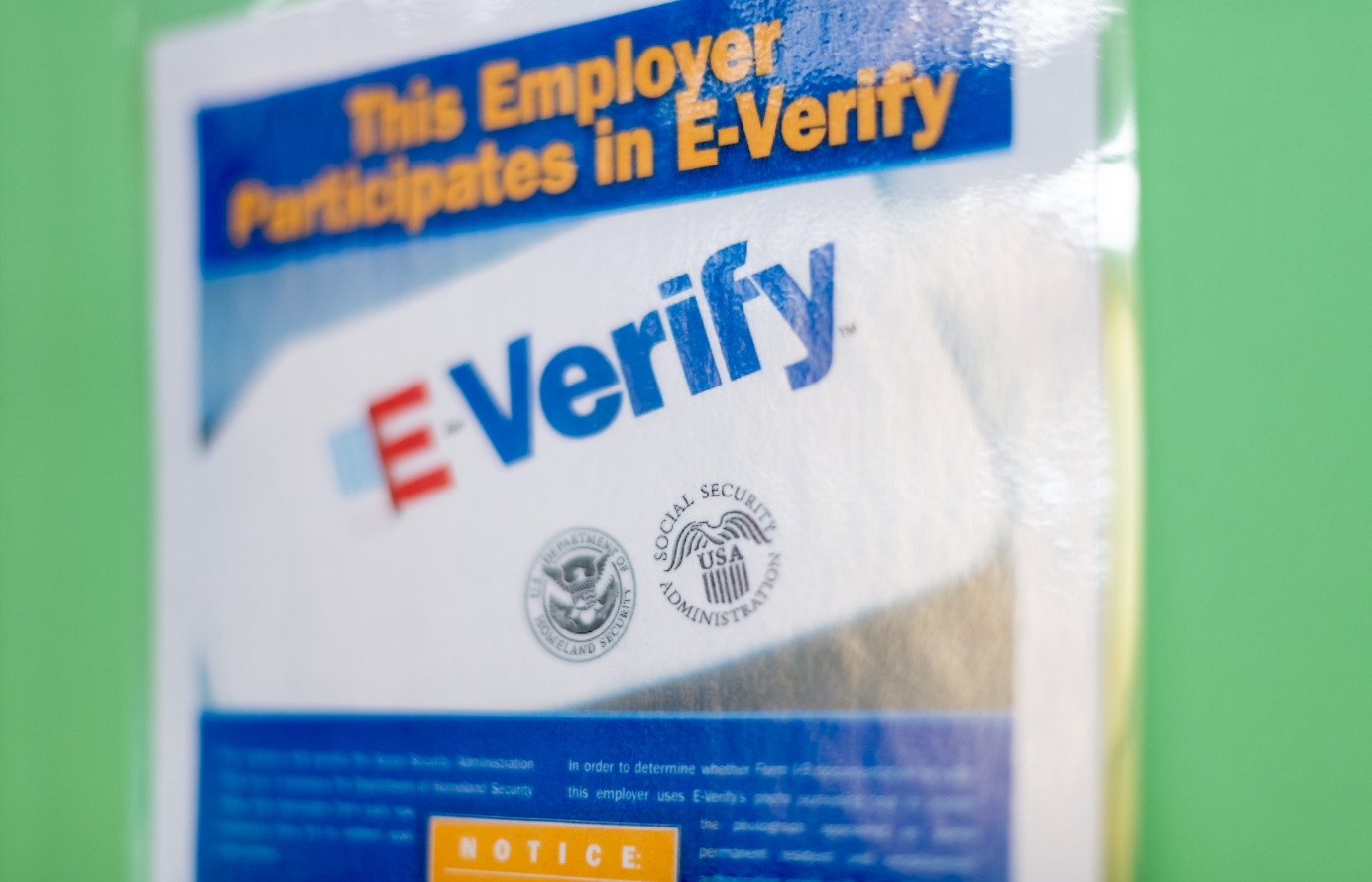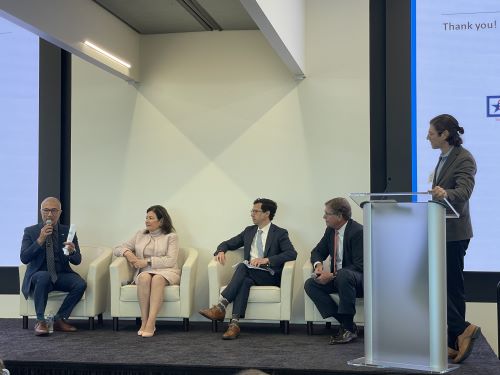FAIR’s “Fiscal Burden of Illegal Immigration” Study Is Fatally Flawed
 The Federation for American Immigration Reform (FAIR) is devoted to reducing legal and illegal immigration. Its recent report, “The Fiscal Burden of Illegal Immigration on United States Taxpayers (2017)” by Matthew O’Brien, Spencer Raley, and Jack Martin, estimates that the net fiscal costs of illegal immigration to U.S. taxpayers is $116 billion. FAIR’s report reaches that conclusion by vastly overstating the costs of illegal immigration, undercounting the tax revenue they generate, inflating the number of illegal immigrants, counting millions of U.S. citizens as illegal immigrants, and by concocting a method of estimating the fiscal costs that is rejected by all economists who work on this subject.
The Federation for American Immigration Reform (FAIR) is devoted to reducing legal and illegal immigration. Its recent report, “The Fiscal Burden of Illegal Immigration on United States Taxpayers (2017)” by Matthew O’Brien, Spencer Raley, and Jack Martin, estimates that the net fiscal costs of illegal immigration to U.S. taxpayers is $116 billion. FAIR’s report reaches that conclusion by vastly overstating the costs of illegal immigration, undercounting the tax revenue they generate, inflating the number of illegal immigrants, counting millions of U.S. citizens as illegal immigrants, and by concocting a method of estimating the fiscal costs that is rejected by all economists who work on this subject.
FAIR’s Errors
Merely using the correct numbers when it comes to the actual size of the illegal immigrant population, the correct tax rates, and the effect of immigrants on property values lowers the net fiscal cost by 87 percent to 97 percent, down to $15.6 billion or $3.3 billion, respectively. Below is a list of FAIR’s errors and how the correct numbers affect the results:
- FAIR assumes that there are 12.5 million illegal immigrants, over a million more than other organizations estimate (FAIR is inconsistent here as the number of illegal immigrants they report on page 34 is 12.6 million). Pew estimates there are 11.3 million illegal immigrants, the Center for Migration Studies (CMS) estimates that there are 11 million illegal immigrants, and the Center for Immigration Studies (CIS) estimates there are 11.43 million illegal immigrants. FAIR’s estimate of the number of illegal immigrants is more than a million more than that of their sister organization, the Center for Immigration Studies, that also shares their goal of reducing immigration. Using the average number of illegal immigrants as estimated by Pew, CMS, and CIS instead of FAIR’s number lowers their report’s estimated cost by $11.6 billion.
- FAIR counts the benefits consumed by the U.S. born American citizen children of illegal immigrants. This means that FAIR also doesn’t count the taxes paid by these U.S. born citizens when they start working. Counting the benefits consumed but ignoring the tax revenue they pay (or will do so in the future) is one way FAIR gets such a negative result for this report. If FAIR counts the welfare consumed by the U.S. born children of illegal immigrants then it must also count the taxes that that cohort pays, but it does not. In this way, the FAIR report biases its results to increase the value of benefits received and diminish the value of taxes paid. Workers with higher education earn more money and pay more in tax dollars. Counting education entirely as a cost without any effort to actually measure the boosted tax revenue that should result from such a system counts only the fiscal costs. FAIR argues that those U.S. citizen children should be counted as illegal immigrants for their fiscal cost analysis because they would not be here without their illegal immigrant parents. It’s a mystery, then, why FAIR does not count the fiscal costs incurred and taxes paid by all of the descendants of illegal immigrants back to when the Federal government first created immigration restrictions in 1875. Furthermore, does this mean that FAIR will seek to count the fiscal costs and tax revenue of the grandchildren of the illegal immigrants as well? If they decide to do that then they should use a dynamic generational accounting model rather than their flawed static model. Using the actual number of illegal immigrant children who are in school lowers FAIR’s estimated education costs borne on the state and local level by $31.7 billion.
- FAIR blames the cost of immigration enforcement on illegal immigrants. FAIR’s argument here comes down to “The U.S. needs to enforce our immigration laws better because the cost of enforcing immigration laws is so high.” We suggest an easy remedy to this problem – cut immigration enforcement. In all seriousness, this is silly. If FAIR was serious about this argument, they would estimate how many illegal immigrants are deterred by immigration enforcement programs and compare that to their bogus budget figures to see the fiscal return on enforcement. Excluding the costs of immigration enforcement, with the exception of the amount spent on incarceration, lowers FAIR’s estimate by $11.9 billion.
- FAIR overcounts welfare benefits consumed by illegal immigrants by including benefits consumed by their U.S. citizen children. They especially overstate Medicaid benefits by counting U.S. citizen children. FAIR also relies on old data for the amount claimed by illegal immigrants in Child Tax Credits that overstates the 2015 number by $800 million. Adjusting downward welfare benefits consumed by eligibility rules reduces FAIR’s estimate by $12.3 billion.
- On healthcare issues besides Medicaid benefits, FAIR estimates that illegal immigrants consume an amount of healthcare proportional to their share of the population. This is a vast overstatement in costs. Overall, all immigrants consume 55 percent less in healthcare dollars per capita than natives. According to the National Academy of Sciences report on the integration and assimilation of immigrants, illegal immigrants are “less likely than native-born or other immigrants to have a usual source of care, visit a medical professional in an outpatient setting, use mental health services, or receive dental care. (Derose et al., 2009; Pourat et al., 2014; Rodriguez et al., 2009). Per capita health care spending has been found to be lower for all immigrants, including the undocumented, than it was for the native-born (Derose et al., 2009; DuBard and Massing, 2007; Stimpson et al., 2010).” Adjusting for lower immigrant per capita health care spending by 55 percent lowers FAIR’s estimate of the uncompensated hospital expenditures, Medicaid births, and Medicaid fraud costs on all levels of government by $13.9 billion.
- FAIR also undercounts the tax revenue generated by illegal immigrants. The first and most egregious undercount is that they ignore how increased housing demand raises the value of all real estate per county which also raises property tax revenue. According to research by economist Jacob Vigdor, each immigrant raises the value of all homes in their county by 11.5 cents. The average immigrant also lives in a county with 800,000 housing units. The locations of illegal and legal immigrants are closely correlated so we can assume that the typical illegal immigrant also lives in a county with 800,000 housing units. If the typical illegal immigrant increases the value of all housing unit prices by 11.5 cents, then illegal immigrants increase nationwide housing values by about $1 trillion. Using the 1.15 percent average annual property tax rate, the increase in housing values created by illegal immigrants results in $12.2 billion in additional tax revenue. Adjusting for the extra property taxes paid by property owners as a result of illegal immigration boosting housing values increases tax revenue by $11.2 billion over FAIR’s estimate.
- FAIR also ignores the incidence of taxation when it comes to calculating their Social Security and Medicare contributions. In law, employers and employees are supposed to evenly split Social Security and Medicare contributions but the reality is more complicated. A recent literature survey on the incidence of taxation for social programs found that workers pay for 66 percent of all Social Security and Medicare taxes through lower salaries. Thus, 66 percent of all contributions to those programs are actually paid by the workers. FAIR also made a mistake. They claimed that the worker and employer each pay a 2.9 percent tax rate for Medicare when, in reality, the worker and the employer each pay 1.45 percent. Correcting for FAIR’s error, adjusting for the actual tax rate for Medicare, and including the incidence of taxation boosts illegal immigrant tax revenue by $6.2 billion. If you include all of Social Security and Medicare taxes paid as a result of illegal immigrant employment, even if employers do pay the actual cost, then it would increase their tax contributions by $18.5 billion
- FAIR probably undercounts sales tax revenue. I write “probably” because one of the sentences on page 54 of their report does not make any sense grammatically or mathematically. About 30 percent of personal income is spent on sales-taxable goods. The average combined state and local sales tax rate was 6.44 percent in 2016 but adjusting for states where illegal immigrant live according to FAIR’s estimate, it is 7.6 percent. FAIR claims that illegal immigrants keep $28,800 in pay after remittances. Adjusting sales tax revenue for the tax rate and the amount of income spent on taxable goods increases illegal immigrant sales tax revenue by $1.6 billion over FAIR’s estimate.
Merely using the actual numbers in a correct way reduces FAIR’s estimates fiscal cost of illegal immigrants from $116 billion to $3.3 to $15.6 billion – and that doesn’t even touch their flawed static approach to counting how illegal immigrants impact the economy.
FAIR’s Methodological Errors
FAIR’s biggest methodological error is that it does not consider the extra economic activity generated by illegal immigrants that would not occur otherwise. The tax revenue collected through that extra activity cannot be adequately measured by looking at IRS forms but must include the taxes paid by U.S. citizens who also have higher incomes as a result. Since the economy is not a fixed pie, removing millions of illegal immigrant workers, consumers, and business owners would leave a gaping economic hole that would reduce tax revenue. The authors of the FAIR study concocted their own methodology that is uninfluenced by the vast empirical, theoretical, and peer-reviewed economics literature that estimates the fiscal cost of immigration.
The authors in that literature find that there are three main ways to estimate the fiscal impact of immigration. The first method is by using macroeconomic models—variants of general equilibrium models—to predict the economic effects of immigration relative to a pre-immigration trend line, additional tax revenue, and additional government expenditure. The second is through generational accounting that pays particular attention to the government’s intertemporal budget constraints. The third is through a net transfer profile that starts with a static accounting model in a base year and then builds a lifecycle net transfer profile for individual immigrants. These are only quasi-rigid categories with the possibility of mixing and matching certain characteristics of each methodology, but each one has its own benefits, drawbacks, and several studies that employ each method, sometimes mixing them. FAIR does not use any of these approaches in constructing their fiscal cost estimate.
The recent National Academy of Science (NAS) study on the fiscal and economic cost of immigrants accounts for the temporal nature of tax revenue and government benefits (people pay taxes at certain parts of their lives and consume more in benefits in others). In order to properly account for the temporal nature of taxes and expenditures requires reducing the lifetime value of both and discounting it to the present value. NAS table 8-14 does just that for federal, state, and local governments (displayed in Figure 1). That Figure does not include public goods like national defense which is unaffected by illegal immigrants (the U.S. states does not require another aircraft carrier if there are 50 million more immigrants here).
Based on the age of arrival and education, immigrants with less than a high school degree who entered before their 24th birthday pay more in taxes than they receive in benefits. Illegal immigrants are potentially even better for public budgets in the short run because their consumption of government benefits is more curtailed than their tax payments (including the incidence of taxation) due to their legal status. Illegal immigrants do not likely consume more in tax benefits than they pay in taxes but, if they do, the figure is small.
Figure 1: NPV Fiscal Impact on Federal, State, and Local Government, CBO Long-Term Budget Outlook, by Age at Entry and Eventual Education. Source: NAS Table 8-14.
| Age at Entry | Less than HS | HS Only | Some College | Bach | More than Bachelors |
| 0-24 | $35,000 | $239,000 | $401,000 | $495,000 | $446,000 |
| 25-64 | -$225,000 | -$42,000 | $157,000 | $504,000 | $994,000 |
| 65+ | -$257,000 | -$164,000 | -$155,000 | -$160,000 | -$100,000 |
Conclusion
FAIR’s report argues for increased immigration restrictions as a way to address the federal budget deficit. However, it relies on poor methodology and contains numerous errors that undermine its credibility. Many years ago, I wrote a criticism of an earlier version this report by FAIR. It’s disheartening to see that this later version written by different authors is even more sloppy and makes more errors than the older version. The immigration debate deserves higher quality research than this recent FAIR report.








